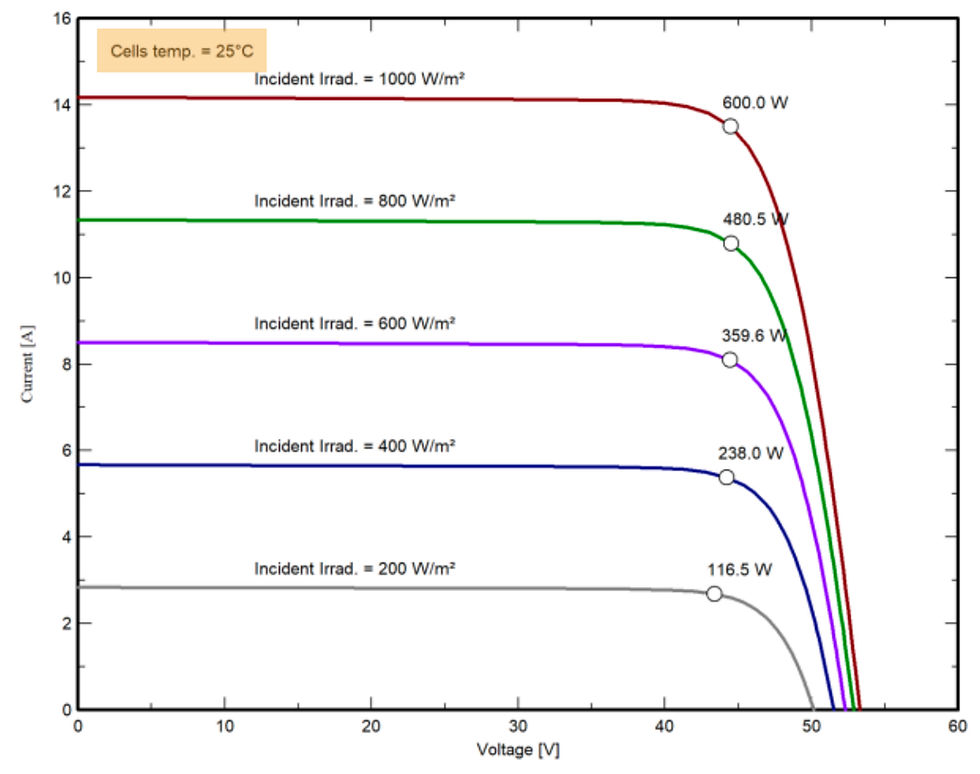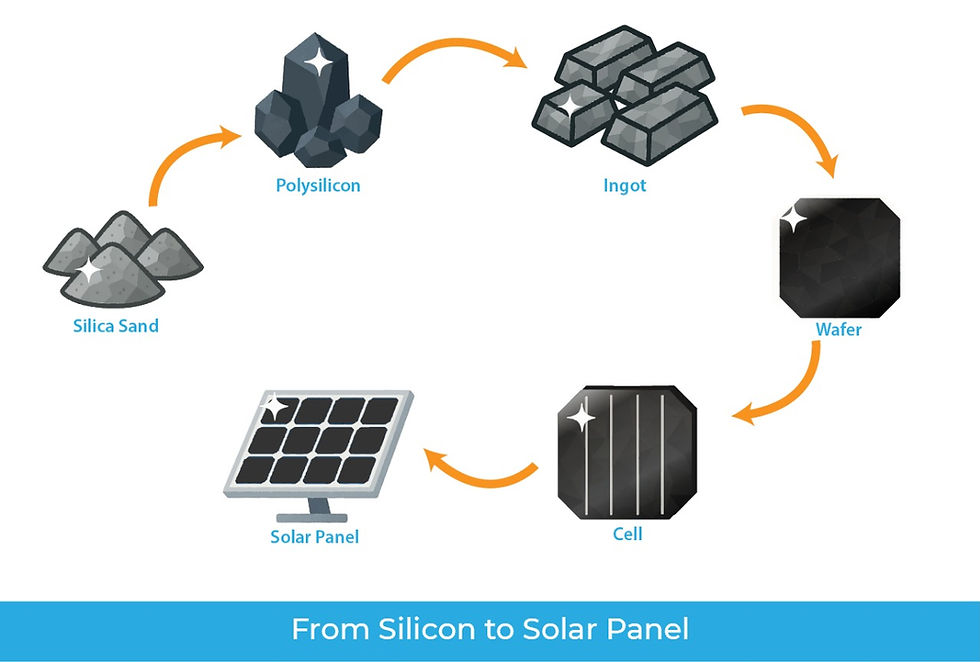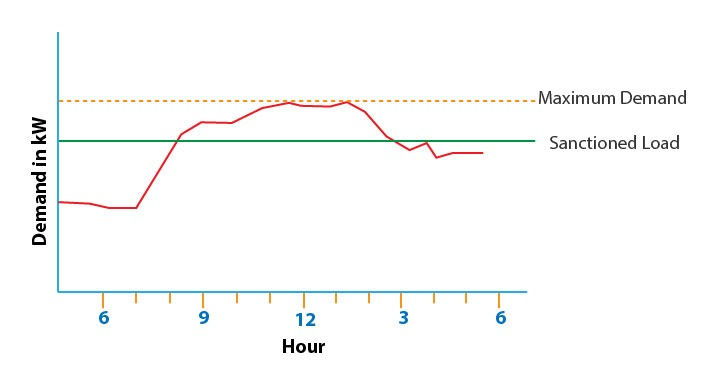Impact of Temperature on Solar Panel Performance
- Hyde Source

- Jul 29
- 4 min read
When thinking about solar panels, the first thing that comes to mind is sunlight. More sun equals more power, right? While sunlight (irradiance) is indeed the primary factor for electricity generation, another crucial environmental element plays a significant, and often counterintuitive, role in solar panel performance: temperature.
It might seem logical that hotter weather would lead to better solar output, but the truth is, solar panels generally perform more efficiently in cooler temperatures.
Understanding how temperature affects your solar panels is key to maximizing their energy production and ensuring their longevity.
The Core Principle: Heat Reduces Efficiency
Solar panels convert sunlight into electricity using photovoltaic (PV) cells, typically made of semiconductor materials like silicon. This conversion process is most efficient within a specific temperature range. When the temperature of the solar cells rises above this optimal range, their efficiency begins to decline.

Why does this happen?
Semiconductor Physics: As the temperature of the silicon cells increases, the electrons within the material become more excited and move more randomly. While this might slightly increase the current (I), it causes a more significant decrease in the voltage (V) output of the cell. Since power (P) is the product of voltage and current (P = V x I), a substantial drop in voltage leads to an overall reduction in power output and efficiency.
Increased Resistance: Higher temperatures also increase the internal electrical resistance within the PV cells and their interconnections, further impeding the flow of electricity and leading to power losses.
The "Optimal" Temperature and Temperature Coefficient
Solar panel manufacturers rate their panels' performance under Standard Test Conditions (STC), which assume a cell temperature of 25°C (77°F). This is considered the ideal operating temperature for peak efficiency.

To quantify how much a panel's efficiency changes with temperature, manufacturers provide a "temperature coefficient" (specifically, the temperature coefficient of power, Pmax).

What it means: This coefficient indicates the percentage decrease in a solar panel's power output for every 1°C increase in temperature above 25°C.
Typical Range: For most crystalline silicon solar panels (monocrystalline and polycrystalline), this coefficient ranges from -0.3% to -0.5% per °C.
Example: If a panel has a temperature coefficient of -0.3% per °C, it means that for every degree Celsius the panel's temperature rises above 25°C, its power output will decrease by 0.3%. So, if a panel reaches 45°C (20°C above STC), its efficiency would drop by 6% (20 x 0.3%).
Conversely, for every degree Celsius below 25°C, the panel's efficiency will increase by the same percentage. This is why solar panels often perform exceptionally well on cool, sunny days.
Impact of High Temperatures
While solar panels are designed to withstand high temperatures (often operating at surface temperatures well above ambient air temperature, sometimes reaching 65°C / 150°F or higher in direct sunlight), prolonged exposure to excessive heat can have several negative impacts:
Reduced Immediate Efficiency: As explained above, the most immediate effect is a drop in power output during hot periods. This means that even on a very sunny day, if the panel itself gets too hot, it won't produce as much electricity as it would on a cooler, equally sunny day.
Accelerated Degradation: Long-term exposure to consistently high temperatures can accelerate the natural degradation rate of solar panels.
This can lead to:
Thermal Cycling Stress: Repeated heating and cooling cycles cause materials to expand and contract, leading to stress on cells and encapsulants, potentially causing micro-cracks over time.
Damp Heat Degradation: High heat combined with humidity can degrade internal components and electrical connections.
Potential Induced Degradation (PID): While modern panels are more resistant, high temperatures can exacerbate PID, which is a voltage-induced power loss phenomenon.
Hot Spots: Shaded or faulty cells can act as resistive loads, consuming power and generating localized heat, leading to "hot spots." While half-cut panels are designed to mitigate the severity of hot spots, extreme temperatures can still contribute to their formation and impact.
Impact of Cold Temperatures
In contrast to high temperatures, colder temperatures are generally beneficial for solar panel efficiency.
Improved Efficiency: As the temperature drops below 25°C, the voltage output of the PV cells increases, leading to higher power production. This means that on a crisp, clear winter day with plenty of sunlight, your solar panels can actually produce more electricity per hour than on a hot summer day with the same amount of sun.
Mitigating Temperature Effects
While you can't control the weather, several strategies can help optimize solar panel performance in varying temperatures:
Proper Ventilation: Ensuring adequate airflow beneath and around the solar panels during installation helps dissipate heat, keeping the panels cooler. Mounting panels a few inches above the roof surface allows for natural convection.
Low Temperature Coefficient Panels: When choosing panels, look for those with a lower (closer to zero) temperature coefficient. These panels are less sensitive to heat and will maintain higher efficiency in warmer climates.
Light-Colored Roofing: Lighter-colored roof materials reflect more sunlight and absorb less heat, which can help keep the panels cooler.
Optimal Tilt and Orientation: While primarily for maximizing sunlight exposure, proper tilt and orientation can also aid in heat dissipation.
Monitoring: Regularly monitoring your system's performance allows you to identify any unexpected drops in output that might be temperature-related or indicate other issues.
Conclusion
Temperature is a critical factor influencing solar panel performance. While panels thrive on sunlight, they operate most efficiently in cooler conditions. Understanding the temperature coefficient and implementing proper installation practices can help mitigate the negative effects of heat, ensuring your solar system continues to deliver optimal energy production and long-term savings, regardless of the season.




